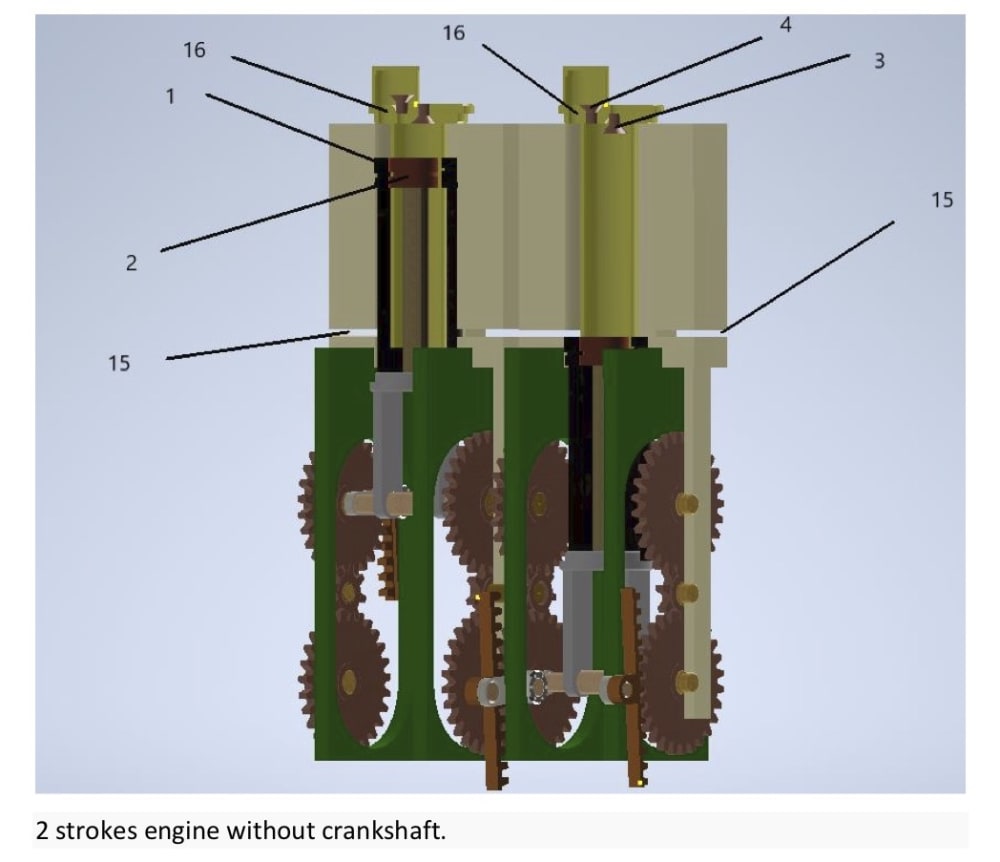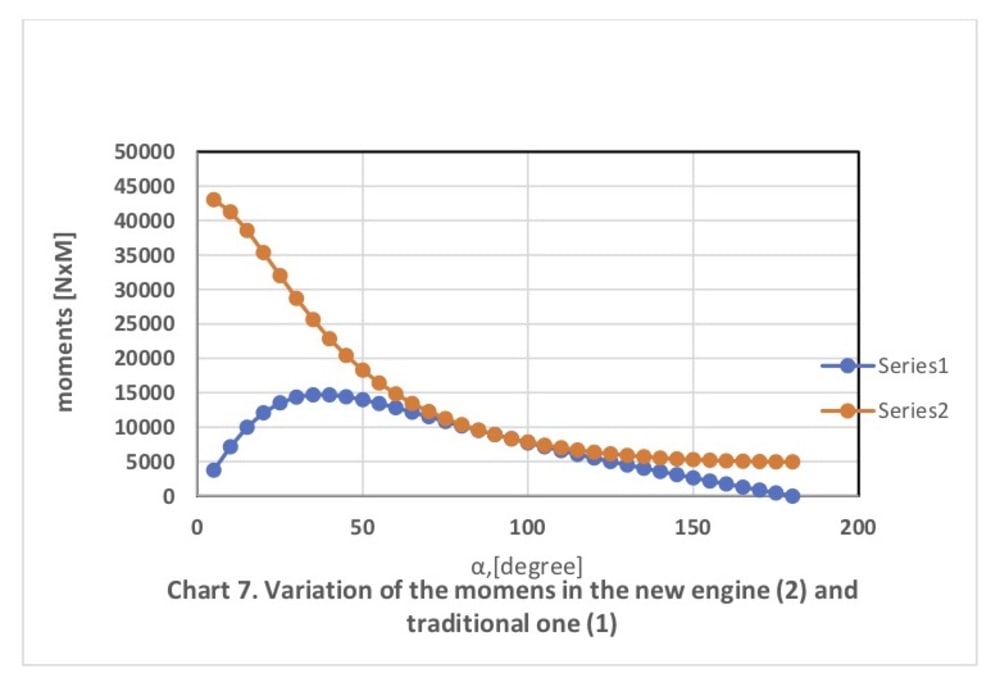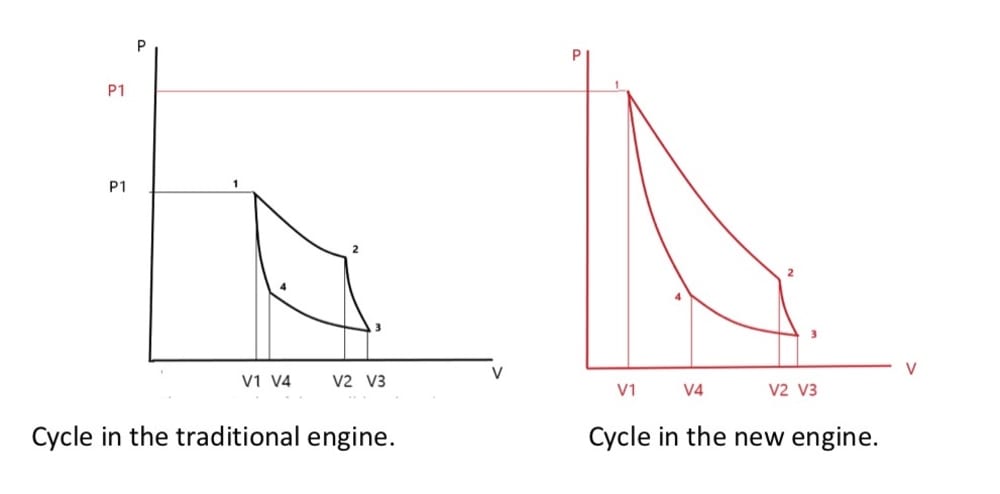The idea of the new engine concept is to replace the crankshaft by gear racks that move linearly and drive the gear wheels (sprockets) creating torque.
The engine can contain from 1 to 2 or 4 units. Optimally – 4.
The engine operates as follows:
When the working mixture is ignited above piston of the main cylinder 1, valve 4 is closed by pressure.
The pressure makes the piston of the main cylinder 1 and the base 6 move down. At the same time, the rod 7 and the piston of the additional cylinder 2 move downward, while the valve 3 is opened by vacuum and ensures the intake of the combustible mixture. The levers 9 mounted on the struts 8 also move down. At the same time, the rollers 10 run along the guides 12, and the gear racks 11 drive the gears wheels (sprockets) 13, creating torque. When piston of the cylinder 1 reaches its extreme low point, the exhaust gases are discharged through openings 15. At this point the sprockets make the gear racks to rotate a 180-degree arc around the sprockets due to their inertial forces and interaction with the attached units. After that the base 6 and the pistons of the cylinders 1 and 2 installed on it are moved upward also due to inertial forces and interaction with the attached units. When moving upward, the mixture entering the cavity above piston of the additional cylinder 2 moves through the valve 4 which is opened by pressure, the common chamber 5 and the channel 16 into the cavity above piston of the main cylinder 1. Now valve 3 is closed by pressure above the piston of the additional cylinder 2. Thus, compressed combustible mixture is created in the cavity above the piston of the main cylinder 1. When the mixture is ignited, the cycle repeats.
Fuel consumption is reduced due to two reasons:
- The gear racks move linearly and provide the lever of tangential force on the drive shaft constant along the pistons entire travel path. In result, the arithmetic average of the moment in the proposed engine is 1.83 times the arithmetic average of the moment in the traditional engine.
- The time delay at the TDC, the pressure and temperature are higher than in the traditional one by at least 20-30%. The HP of the new engine will be more than in the traditional one in the same scale using equal amounts of fuel for both engines.
Improved exhaust and fuel combustion process.
- Due to delay at the BDC the time for exhaust increases many-fold. This means that fresh fuel-air mixture will not mix with the remnants of the combusted mixture.
- The combustion stroke and the injection stroke are performed simultaneously, both strokes being isolated.
- The absence of the gas distribution mechanism, including a camshaft, means that the pressures in cylinders 1 and 2 make "opening" and "closing" of the valves 3 and 4 and aperture 15.
Video
Like this entry?
-
About the Entrant
- Name:Serguei Tikhonenkov
- Type of entry:individual
- Software used for this entry:inventor
- Patent status:none








